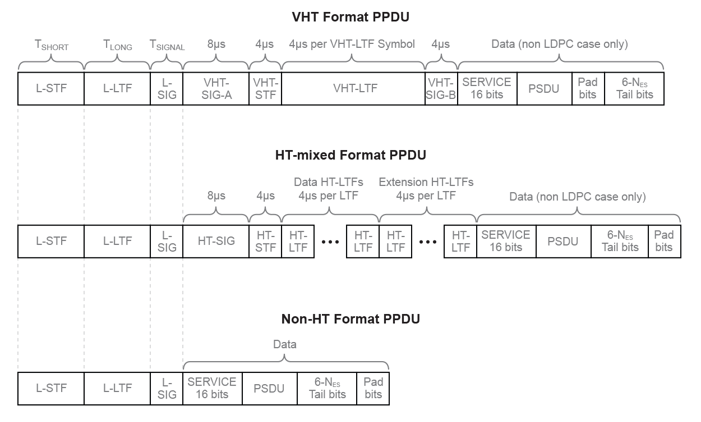wlanLSIG
Generate L-SIG waveform
Description
[y,bits] = wlanLSIG(cfgFormat,OversamplingFactor=
generates an oversampled HT-LTF waveform with the specified oversampling factor. For
more information about oversampling, see FFT-Based Oversampling.osf)
Examples
Input Arguments
Output Arguments
More About
Algorithms
References
[1] IEEE Std 802.11ac™-2013 IEEE Standard for Information technology — Telecommunications and information exchange between systems — Local and metropolitan area networks — Specific requirements — Part 11: Wireless LAN Medium Access Control (MAC) and Physical Layer (PHY) Specifications — Amendment 4: Enhancements for Very High Throughput for Operation in Bands below 6 GHz.
[2] IEEE Std 802.11™-2016 (Revision of IEEE Std 802.11-2012). “Part 11: Wireless LAN Medium Access Control (MAC) and Physical Layer (PHY) Specifications.” IEEE Standard for Information technology — Telecommunications and information exchange between systems — Local and metropolitan area networks — Specific requirements.
Extended Capabilities
Version History
Introduced in R2015b
See Also
wlanVHTConfig | wlanHTConfig | wlanNonHTConfig | wlanLLTF | wlanLSIGRecover
1 IEEE Std 802.11-2012 Adapted and reprinted with permission from IEEE. Copyright IEEE 2012. All rights reserved.

